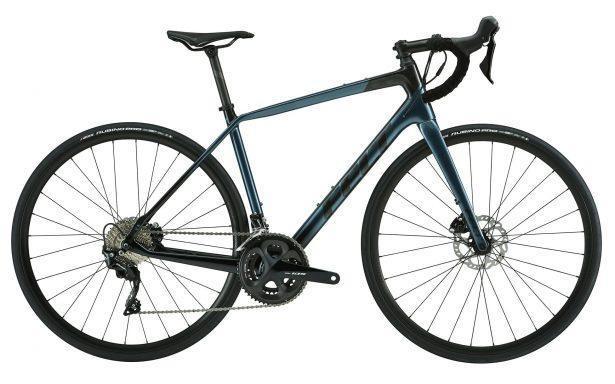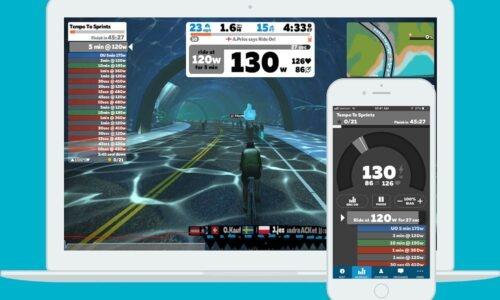Are you thinking about doing a triathlon and wondering whether a specific triathlon bike is necessary or if a road bike will do the job? It’s a common dilemma.
First things first, there are pros and cons to both. And, as with all bikes, it will come down to your riding style, preference, and needs.
This is different for everyone, but as a general rule of thumb, time-constrained beginner cyclists and triathlon wannabees are more suited to a road bike, and athletes focused on performance and time, who do lots of training, are more suited to a triathlon bike.
Here’s our comparison of the two.
Triathlon bikes
A triathlon bike is, by design, far more streamlined and aerodynamic in shape. You’ll normally find a flat or oval tube designed to cut through the air and reduce resistance.
The tubes joining to make the triangle of the frame are typically steeper than those on a road bike, with a position designed to bring the cyclist forward, over the bottom bracket. This is meant to reduce resistance and improve speed.
Triathlon bikes are also normally stiffer, making them more responsive to ‘kicks’ of speed, sharp cornering, and out of the saddle cycling. Of course, that comes with a comfort sacrifice.
Because of the stiffer feel, you’ll notice the bumps on the ride a lot more and the crouched over position can be tough going on your lower back, neck, and shoulders.
Similarly to a road bike, you’ll find the standard groupset parts – brakes, chainset, stem, and so on. However, one of the things that set the triathlon bike apart is the inclusion of fixed aerobars and bar-end gear shifters.
Aerobars pull the rider into a narrow cycling position to promote ultimate efficiency and aerodynamics. This makes the triathlon bike ill-suited for your everyday cycles, recovery rides, or rolling hills which need constant gear changes and positioning.
Basically, triathlon bikes are designed with racing in mind. They are incredibly fast and responsive, with deep-section wheels and lightweight parts.
As the parts are more lightweight and premium, triathlon bikes normally come with a hefty price tag.
A typical triathlon bike
 Trek’s Speed Concept triathlon bike is built for speed. Not only is it seriously aerodynamic, but it’s pretty easy to handle, making it a good option for all.
Trek’s Speed Concept triathlon bike is built for speed. Not only is it seriously aerodynamic, but it’s pretty easy to handle, making it a good option for all.
It comes with loads of customizable features, carbon aero wheels, an 11-speed Shimano Ultegra drive train, a lightweight carbon frame, Dura-Ace bar-end shifters, fully integrated tri-bars, and aero tube shaping.
Everything about it is designed to improve your speed. The lightweight components, the Ultegra drive train, and the carbon wheels will give you the edge over a road bike.
The cost, however, is on the pricey side (although not that expensive for a triathlon bike of similar specs). If you want to improve time, or are doing a time trial, or generally love speed, you’ll find this bike a dream.
Road bikes
The good thing about a normal road bike is there are so many variations available.
Yes, a road bike is less specific for the job than a triathlon bike, but it has far more balance when it comes to comfort, handling, and weight. And most modern road bikes still perform well in terms of speed and aerodynamics.
If you are looking for a bike that fits more than one purpose, a road bike is more suitable. They are designed to perform well in various types of cycling, from commuting to racing to all-day rides and do well on a lot of different surfaces.
One of the weaknesses with triathlon bikes is the performance in adverse weather conditions. Wind, in particular, catches on the deep-section wheels and blows the bike significantly. A road bike deals with weather conditions a lot better.
Road bikes typically have shallower tube angles and a more neutral riding position, with the rider behind the bottom bracket. The frame is built to cushion vibrations, but with enough stiffness for efficiency.
Road bikes also have dropped handlebars, meaning you can choose how aggressive you want your riding position to be.
Additionally, you have the option of adding clip-on aerobars if you wanted. The wheels on a road bike vary but a generally easier to remove and replace.
A typical road bike for endurance

Felt’s VR Advanced 105 is perfect for endurance cyclists. As part of Felt’s versatile VR rage, the VR Advanced 105 is made for long days on the saddle, focusing on comfort and the smoothness of the ride.
You’ll get mechanical shifting rather than electronic, but instead, you’ll benefit from deep 30mm compatible tires, a modern geometry, the power of hydraulic disc brakes, and more.
Plus, it still performs fast enough for most cyclists. The bike is powered by the ultra-reliable Shimano 105 drive set.
A typical road bike for racing

The 2019 Roubaix 1.5 by Fuji is a more aggressive style of a road bike. It’s designed to be one of the lightest aluminum racing bikes available, with a frame weight of under 1100g, and sits at the top of aluminum racing bikes.
Although the bike is seriously lightweight, it doesn’t sacrifice on stiffness, so you’ll still feel the power and responsiveness associated with a bike designed for racing.
The Roubaix 1.5 comes with an aggressive race geometry to improve the aerodynamics of the rider, an oversized octagonal-shaped downtube, carbon forks, internal cable routing which is compatible with all drivetrain systems and asymmetrical chainstays.
If you aren’t planning on spending hours upon hours on your bike and want something built a little more for speed, it’s a great option.
Making the switch from a road bike to triathlon bike
If you’ve been cycling on a road bike before and are deciding on making the switch, just remember than either option will serve you well.
If you are not a confident cyclist, stick with a road bike. Additionally, if you get a lot of aches and pains, stick with a road bike.
If you do make the switch to a triathlon bike, make sure you practice on the road to get used to the riding position, responsiveness, and so on. It does feel different.
It’s vital to get your set up correctly to make the most of the aerodynamics and reduce the risk of injury. Otherwise, you will barely feel any difference in performance between a triathlon bike and a road bike, apart from the inevitable backache.

Founder of Vivi Nation, the cycling, running and active living brand. Chris is a sports enthusiast, occasional triathlete and experienced cyclist, having led multiple cycle tours across Europe.


